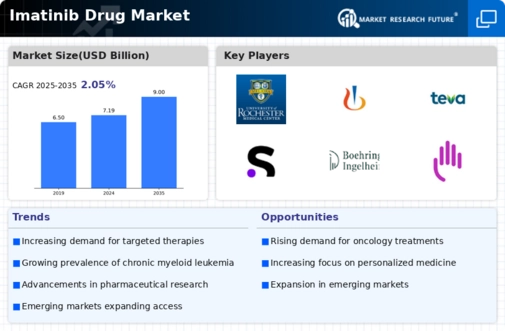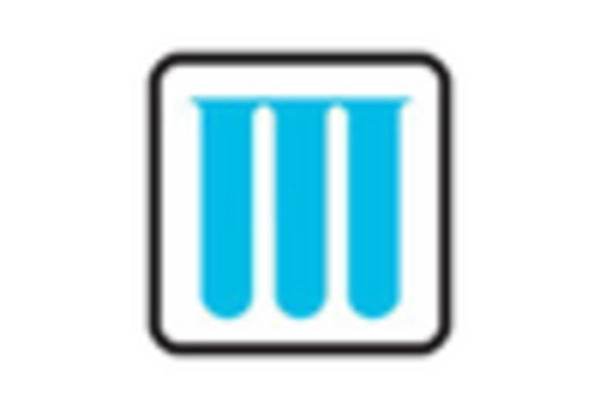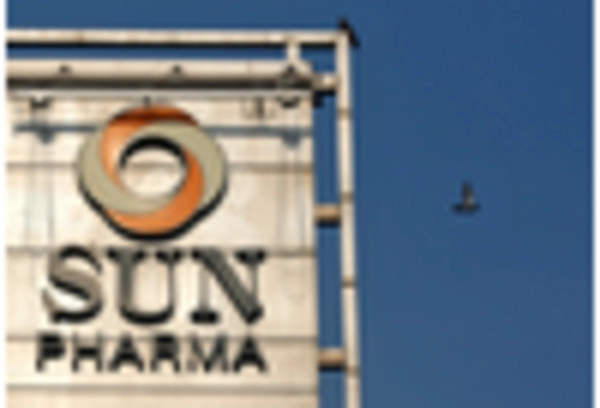Rising Healthcare Expenditure
The Imatinib Drug Market is positively impacted by rising healthcare expenditure across various regions. Increased investment in healthcare infrastructure and services is leading to improved access to cancer treatments, including Imatinib. As governments and private sectors allocate more resources to healthcare, the availability of advanced therapies is expanding. This trend is particularly evident in emerging markets, where healthcare spending is on the rise, allowing for greater access to essential medications. The growing emphasis on cancer care and treatment options is likely to drive demand for Imatinib, as patients seek effective therapies. Consequently, the Imatinib Drug Market stands to benefit from this upward trajectory in healthcare expenditure.
Increasing Incidence of Cancers
The Imatinib Drug Market is experiencing growth due to the rising incidence of cancers, particularly chronic myeloid leukemia (CML) and gastrointestinal stromal tumors (GISTs). According to recent statistics, the prevalence of CML has been steadily increasing, with an estimated 5,000 new cases diagnosed annually in certain regions. This surge in cancer cases necessitates effective treatment options, thereby driving demand for Imatinib. As healthcare providers seek to offer targeted therapies, the Imatinib Drug Market is positioned to expand, catering to the needs of patients requiring innovative treatment solutions. Furthermore, the increasing awareness of cancer screening and early detection is likely to contribute to the growth of the market, as more patients are diagnosed and treated with Imatinib.
Advancements in Personalized Medicine
The Imatinib Drug Market is significantly influenced by advancements in personalized medicine. As the understanding of genetic mutations and their role in cancer progresses, therapies like Imatinib, which target specific molecular pathways, are becoming increasingly relevant. The identification of biomarkers associated with CML and GISTs allows for tailored treatment approaches, enhancing patient outcomes. This trend is reflected in the growing number of clinical trials focusing on the efficacy of Imatinib in various patient populations. The market is likely to benefit from the integration of genetic testing in treatment protocols, as healthcare providers aim to optimize therapy based on individual patient profiles. Consequently, the Imatinib Drug Market is poised for growth as personalized medicine continues to evolve.
Regulatory Support for Oncology Drugs
The Imatinib Drug Market is bolstered by regulatory support for oncology drugs. Regulatory agencies are increasingly prioritizing the approval of innovative cancer therapies, recognizing the urgent need for effective treatments. Fast-track designations and priority review processes are being implemented for drugs like Imatinib, which demonstrate significant clinical benefits. This regulatory environment not only expedites the availability of Imatinib to patients but also encourages pharmaceutical companies to invest in research and development. The market is likely to see an influx of new formulations and combinations involving Imatinib, as regulatory bodies facilitate the exploration of novel therapeutic strategies. Such support is essential for the continued growth of the Imatinib Drug Market.
Growing Awareness and Education on Cancer Treatments
The Imatinib Drug Market is influenced by the growing awareness and education surrounding cancer treatments. Increased public knowledge about cancer types, treatment options, and the importance of early intervention is driving demand for effective therapies like Imatinib. Educational campaigns and initiatives by healthcare organizations are playing a crucial role in informing patients and healthcare providers about the benefits of targeted therapies. This heightened awareness is likely to lead to more patients seeking treatment with Imatinib, thereby expanding the market. Additionally, as healthcare professionals become more informed about the latest advancements in oncology, the adoption of Imatinib as a preferred treatment option is expected to rise, further propelling the growth of the Imatinib Drug Market.

















Leave a Comment